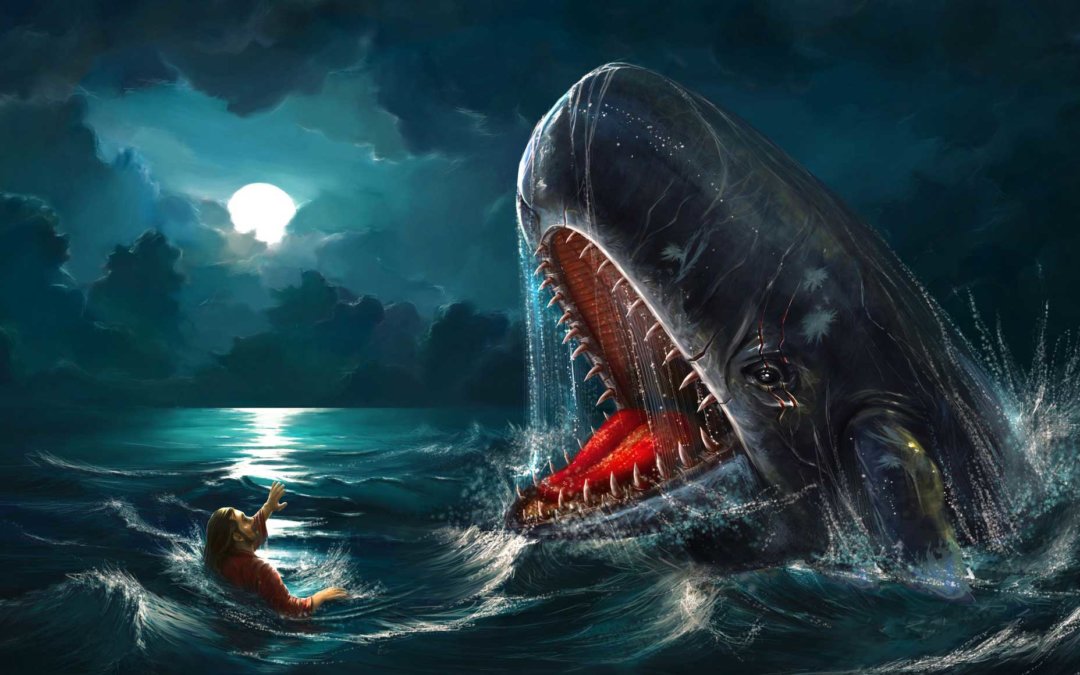
Flight of the prophet Jonah
Part Two:
Whales in Mediterranean in antiquity
“But a new study, published last week in the Proceedings of the Royal Society B by an international team of researchers, offers the first evidence that there were once whales in the Mediterranean”.
Candida Moss
In her (July 2018) article, “Did Researchers Just Solve the Jonah and the Whale Puzzle?”, Candida Moss writes:
Even if you grant the existence of miracles, where did the whale (people almost always think the fish is a whale) in the Mediterranean come from?
For both ancient and modern people it’s a remarkably popular tale. Ancient Christians used to adorn the walls of catacombs in Rome with artwork showing Jonah’s deliverance. They saw Jonah’s three-day captivity in the fish as a prefiguration of both Jesus’ death and resurrection and also the eventual resurrection of the Christian dead.
But one element puzzles modern readers: even if you grant the existence of miracles, where did the whale (people almost always think the fish is a whale) in the Mediterranean come from?
In other Biblical passages God’s adversary is also described as some kind of sea creature. Sometimes referred to as Rahab and sometimes as Leviathan, this primordial monster was an adversary of God. These ancient peoples had never seen Jaws; given the relatively predator-free status of the Mediterranean, what are they so afraid of?
This isn’t a problem exclusive to Bible stories. The ancient Romans, too, appeared anxious about the presence of sea monsters in the Mediterranean. In fact while they were enormously fond of swimming in their famous baths, local rivers, and man-made plunge pools, the Romans were less interested in swimming in the sea. They were terrified of it.
There are all kinds of legitimate reasons to be afraid of the sea that don’t include fierce aquatic creatures. Pirates were a real threat, and the lack of technology and communications systems we enjoy today meant that shipwrecks were a common, costly, and deadly affair. Anxieties about these are a common current throughout ancient literature. In Homer’s Odyssey, Odysseus and his crew are shipwrecked and everyone but the protagonist is killed. In the same way, the shipwreck scene—in which the hero or heroine is shipwrecked and washes up in a foreign land—is one of the pivotal plot devices of ancient Greek Romance novels (the harlequin novels of their time).
It's easy to see why people were afraid of the sea, but it was the sea monster (cetus) that captivated the imagination of ancient artists and writers. As Aeschylus put it, “The arms of the deep teem with hateful monsters.” Variants of these curly-tailed serpentine sea monsters are found in all over ancient artwork, often being ridden by sea nymphs but occasionally being killed by heroes like Herakles. Until now the preoccupation with these strange, presumed mythical creatures was, simply put, odd.
But a new study, published last week in the Proceedings of the Royal Society B by an international team of researchers, offers the first evidence that there were once whales in the Mediterranean. In their article, the team, headed up by Ana Rodrigues of the Université de Montpelier, analyzed the DNA in a rare set of whale bones from Roman and pre-Roman sites in the Strait of Gibraltar. The results identified two species of whale: right whales (Eubalaena glacialis) and Grey whales (Eschrichtius robustus). Their article concludes that roughly two thousand years ago the Mediterranean was a calving ground.
Even more remarkable, the study argues that the reason we no longer see these whales in the Mediterranean is because ancient commercial whaling by the Romans drove them from the region.
The Romans were prodigious fishermen and had hundreds of processing plants for fish dotted along the Western coast of the Mediterranean (much of which was salted, dried and, sometimes, turned into garum, a popular Roman fish sauce). In a sensibly guarded comment to the New York Times, Rodrigues said, “We show the Romans had the means, technology and the opportunity for a whaling industry. But we don’t prove that they did.”
If accurate, this study can explain why it was that ancient peoples who lived along the Mediterranean were so afraid of sea monsters, and also why we no longer see these “monsters” today.
This in turn can help solve one of the biggest marine puzzles in the Bible: what did people imagine swallowed Jonah? Christian catacomb art of the “fish” depicts it as a kind of undersized water dragon with bunny ears. So while Northern Europeans might have always assumed it was a whale, this wasn’t always the case, and only now seems credible.
The discovery also sheds some light on what people may have thought God’s aquatic adversary actually was. The Bible uses the language of fierce animals like lions to describe the power of the Devil. Now to this thesaurus of demonic imagery we can add a new, usually beloved figure: the whale.